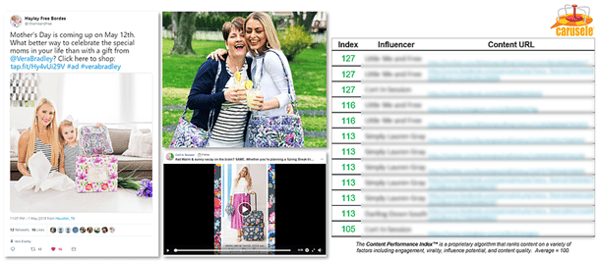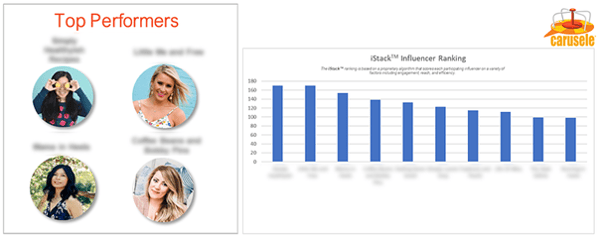While influencer marketing has historically always had its challenges, COVID-19 has raised even more issues for the industry. However, when done properly, campaigns can perform well as we're seeing record efficiencies for those campaigns we've modified and continued to run. As a result of these programs, we've compiled five influencer marketing best practices we recommend you follow if you choose to move forward with your campaigns during this crisis. Feel free to watch the video below or read this entire post for more detail on these best practices.
Influencer Marketing Best Practices during COVID-19
Leverage Ambassadors and/or Existing Relationships
Influencer ambassador strategies have continually proven to be effective at driving ROI for brands, so now is the time to take advantage of those relationships. Because these ambassadors have continually supported your brand and products over a long period of time, it won't feel forced or inauthentic for them to continue to talk about your products now. Authenticity is key during this sensitive time, so having an ambassador approach the content and messaging in a new way that you wouldn't traditionally approve of because it's more relatable right now is definitely the course to take.
No ambassadors? No worries! If you've at least run one influencer campaign before, revisit that list of influencers for opportunities. Even better, if you have the ability to evaluate the performance of your influencers and can identify those who have helped you drive better results, prioritize those partnerships. We use our iStack ranking system to analyze the content quality, engagement rate, share rate, and influencer efficiency of each influencer in every program we run. This opens the door for ambassador relationships that we cultivate for our clients.
Check Your Messaging
While this should be a priority with every campaign, it's especially important right now (and during any crisis) to ensure your messaging is sensitive to the current situation. No one wants to see a sales pitch, and no one wants to see a brand trying to capitalize off a bad situation. Either of those could stir up some real trouble for your brand.
Also, make sure you're messaging relates to your target audience's current situation. A recent survey conducted by our sister company, Ignite Social Media, revealed that there's certain types of content that consumers want to see from brands right now -- but what they want varies depending on their social distancing status. For example, those who have been formally quarantined are most likely to seek brand updates and want to be entertained. Meanwhile, medical and civil service workers are most eager for updates on hours and product availability.
Capitalize on Content
Right now, running a full-fledged influencer marketing program may not be a priority, so don't force it! There are other ways to take advantage of influencer relationships, like leveraging their content creation capabilities. A recent survey from last month unveiled a 33% increase in brands looking to hire influencers to create their photo and video assets. This makes sense, as most influencers have everything they need to continue their business from the comfort of their homes. Don't waste resources and money when you don't need to, especially during an economic crisis.
Additionally, you may not need to seek out new content assets from influencers at all. Take some time to look back at old campaign content and see if there are any assets you can repurpose. Like we recommended with influencers, try to evaluate the worth of each asset by comparing performance against other pieces and using those top-performing assets. While this may take a little time upfront, it's going to be very cost effective in the long run.
 WATCHOUT: Before you repurpose any assets, make sure you have the rights to reuse an influencer content. At Carusele, we license all content from the influencer as part of their contract and sub-license it to the brand (which they can they repurpose in perpetuity).
WATCHOUT: Before you repurpose any assets, make sure you have the rights to reuse an influencer content. At Carusele, we license all content from the influencer as part of their contract and sub-license it to the brand (which they can they repurpose in perpetuity).
Amplify with Paid Media
While paid media might not always be a part of your influencer marketing strategy, now is the time to invest. We're seeing record efficiencies in terms of decreased CPMs, CPCs, and CPLPVs (cost per landing page view) for campaigns we're running right now, but we predict that this won't last forever. As we start to roll "back to normal", media costs are likely to return and possibly inflate as marketers resume paid advertising.
WATCHOUT: Try to avoid hitting the "boost" button on Facebook, and more importantly, don't amplify every piece of content. As we recommended above, work to identify which assets perform well organically and allocate your budget accordingly.
Monitor Constantly
As you should during any crisis, be sure to have a human-being monitor your content on a regular basis (at least daily). Using a tool to flag content is an okay alternative, but sometimes computers miss or misinterpret things, which you wouldn't want to happen right now. By having someone there to see how audiences are receiving the content, it will allow your brand to optimize and/or pivot your strategy as needed to ensure optimal results (especially if you do decide to run ads with your influencer content).
If you need help executing any of these best practices, we're here to help. Just contact our team today or download our capabilities deck below to learn more about our unique approach to influencer marketing.
-1.png?width=504&height=360&name=Carusele%20logo%20%C2%AE%20logo%20Color%20(2)-1.png)

-1.png?width=728&name=Blog%20Ads%20(3)-1.png)
.png?width=728&name=Blog%20Ads%20(8).png)